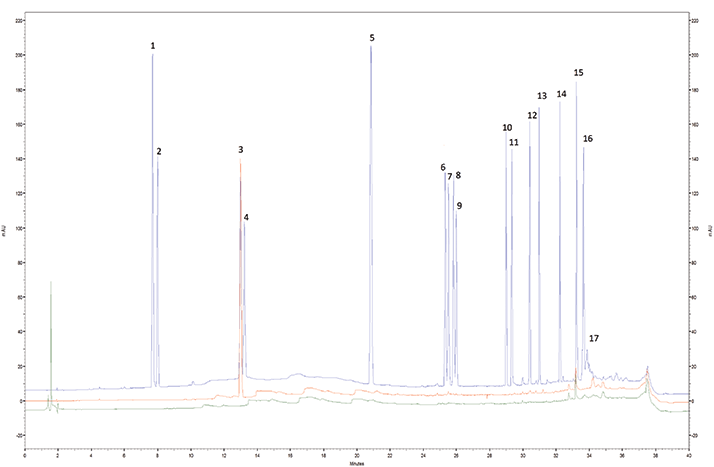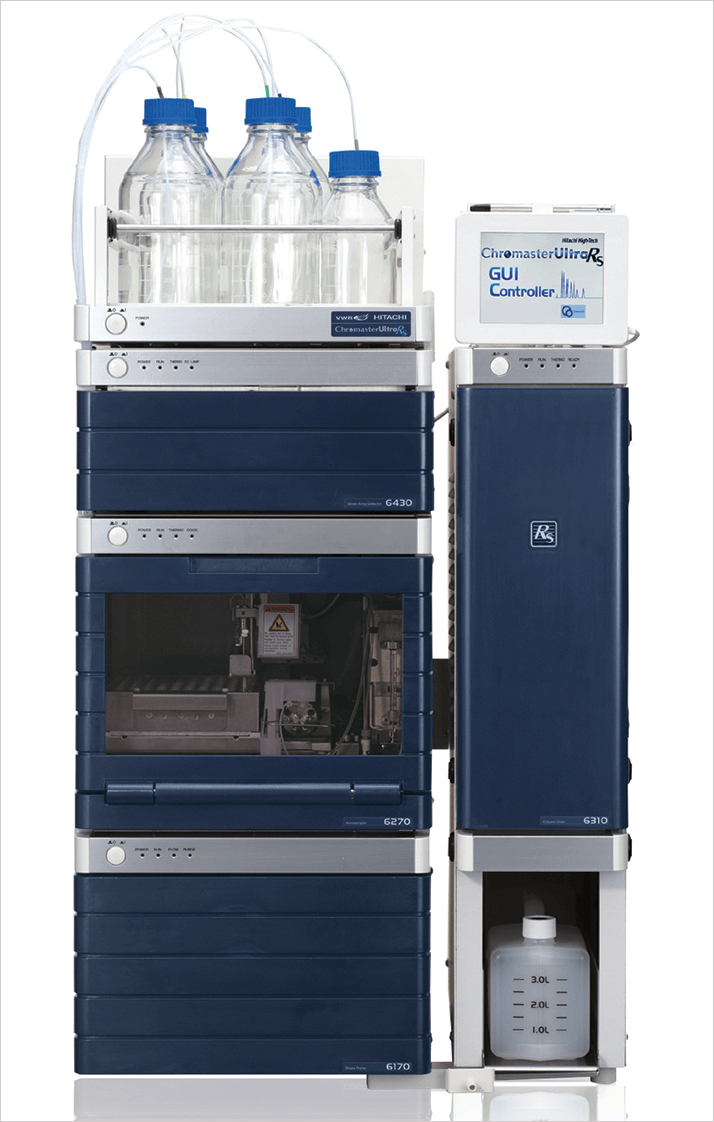Phthalates are present in a vast range of consumer products owing to their use as plasticisers, dispersants, gelling agents and emulsifying agents to name but a few. They are known, however, to cause malformations of the reproductive tract in mammals and there is also reported genotoxicity in humans. It is therefore important to monitor these within consumer products. This causes some problems for the Chromatographer as separation of such compounds using RP HPLC can be troublesome in that full base line separation is not achieved between a number of peaks. Therefore, some methods are developed with needlessly complicated gradients, which, of course, reduce the robustness of the method.

Using the ChromasterUltra Rs together with the LaChromUltra II column (250 mm x 3 mm, 1.9 µm) achieves good separation for all 17 phthalate compounds. The Chromatogram shows a good separation of 17 Phthalate esters (100 ng/µl each in hexane) in drinking water, especially between such similar compounds as 7. DIBP and 8. DBP (see Figure 1).

The ChromasterUltra Rs has been designed with exactly this application in mind – the separation of similar and related compounds. With very low dwell volume and a newly designed, patented gradient mixing technology, the superior performance of the system compliments the LaChromUltra II C 18 column. This high resolution column with grafted organic/inorganic silica is not only highly pressure stable to 1400 bar but is also highly resistant to alkali mobile phase as a result of the polymeric surface modification; therefore, mobile phases between pH 1 and pH 12 can be used. The ChromasterUltra Rs Diode Array Detector offers very low noise and drift, and a newly designed total internal reflection capillary flow cell. Therefore, high sensitivity with low noise is achieved for much lower limits of detection.




References
- Perinatal Exposure to the Phthalates DEHP, BBP, and DINP, but Not DEP, DMP, or DOTP, Alters Sexual Differentiation of the Male Rat; L.E. Grey Jr. et al, Toxicol. Sci. (2000) 58 (2): 350-365. Phthalates demonstrate genotoxicity on human mucosa of the upper aerodigestive tract; N. H. Kleinsasser, Environmental and Molecular Mutagenis. Volume 35, Issue 1, pages 9-12, 2000

